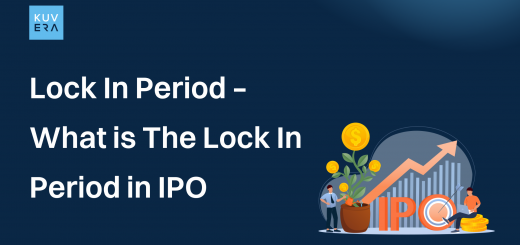What is an IPO?
An initial public offering (IPO) is the process by which a privately held company becomes a publicly traded company by selling shares of its stock to the public. An IPO allows the company to raise capital by selling ownership stakes to investors, and it also provides an opportunity for the company’s founders, employees, and early investors to monetize their holdings.
The process of going public involves several steps, including preparing and filing a registration statement with the securities regulator, marketing the offering to potential investors, and pricing the shares. After the IPO, the company’s shares are listed on a stock exchange, and the stock can be bought and sold by the public through a brokerage account.
IPOs can be a significant event for the company and its stakeholders, as it can provide access to a broader pool of capital and liquidity for the company’s stock. However, going public also involves increased regulatory scrutiny and disclosure requirements, as well as the need to meet the expectations of public market investors.
How does an IPO work?
An initial public offering (IPO) is a complex process that involves several steps. Here is a general overview of how an IPO works:
Preparation: The company and its advisors, such as investment banks and law firms, begin the process of preparing for the IPO. This includes developing a plan for the offering, determining the number and price of the shares to be sold, and preparing a registration statement to be filed with the securities regulator.
Filing: The company files a registration statement with the securities regulator, such as the Securities and Exchange Commission (SEC) in the United States. The registration statement includes detailed information about the company’s business, financial condition, and the terms of the offering.
Marketing: The investment banks working on the IPO, known as underwriters, begin marketing the offering to potential investors. This typically involves creating a “roadshow,” during which the company’s management team travels to meet with institutional investors and analysts to pitch the company and its growth prospects.
Pricing: The underwriters work with the company to determine the price of the shares to be sold in the offering. The price is based on a variety of factors, including the company’s financial performance, industry trends, and the demand for the company’s stock.
Allocation: After the price is determined, the underwriters allocate the shares to various investors based on their demand for the stock.
Trading: On the day of the IPO, the shares are listed on a stock exchange and begin trading. The underwriters may also engage in stabilization activities to support the price of the stock in the initial days of trading.
It is important to note that the process of going public can take several months and can be complex and expensive. The company will incur significant legal, accounting, and underwriting fees in connection with the IPO.
History of IPOs in India
The history of initial public offerings (IPOs) in India dates back to the early 1990s when the Indian government began to liberalize and open up the country’s economy to foreign investment. Since then, the IPO market in India has grown significantly, with a large number of companies going public and raising capital through the sale of shares to the public.
In the early years of the IPO market in India, most of the companies that went public were state-owned enterprises that were being privatized. However, in the 2000s, there was a significant increase in the number of privately held companies going public, as well as an increase in the size and complexity of the offerings.
In recent years, the IPO market in India has been fairly active, with a number of large and successful offerings. In 2019, for example, the Indian IPO market raised more than $11 billion, making it one of the largest IPO markets in the world.
However, the IPO market in India has also been subject to some market fluctuations and volatility, and there have been instances of companies failing to meet the expectations of public market investors after going public. Overall, the IPO market in India continues to play an important role in the country’s economy and capital markets.
How to invest in an IPO
An initial public offering (IPO) is the process through which a privately-held company becomes publicly traded by selling shares of its stock to the public. Here are the steps you can follow to invest in an IPO:
Determine your investment goals: Before you invest in an IPO, it’s important to understand your investment goals and risk tolerance. Consider factors such as your financial situation, the length of time you plan to hold the investment, and your desired level of risk.
Research the company: It’s important to thoroughly research the company before investing in an IPO. This includes examining its financial statements, business model, and management team. You may also want to consider the company’s industry and competitors.
Choose a broker: To invest in an IPO, you’ll need to open a brokerage account with a financial institution that offers IPO investment opportunities. Some brokers have a process in place for participating in IPOs, while others do not.
Place your order: When the IPO becomes available, you can place an order through your broker to purchase shares. Keep in mind that IPO shares are typically allocated on a first-come, first-served basis, so it’s important to place your order as soon as possible.
Wait for the IPO to be completed: After you place your order, you’ll need to wait for the IPO to be completed. This process can take several weeks or even months, depending on the company and the market conditions.
It’s important to note that investing in an IPO carries certain risks, such as the possibility of the stock price declining after the IPO. It’s always a good idea to carefully consider the risks before investing any money.
Advantages & Disadvantages of investing in IPO
There are both advantages and disadvantages to investing in an initial public offering (IPO). Here are some potential benefits and drawbacks to consider:
Advantages:
Opportunity to get in on the ground floor: An IPO represents an opportunity to get in on the ground floor of a company that is just starting to trade publicly. This can be especially appealing if you believe the company has strong growth potential.
Potential for strong returns: If the company performs well after the IPO, its stock price may rise significantly, which could lead to strong returns for investors.
Diversification: Investing in these can be a way to diversify your portfolio and potentially reduce overall risk.
Disadvantages:
Risk of price decline: There is a risk that the stock price may decline after the IPO, which could result in losses for investors.
Lack of historical data: With an IPO, there is often limited historical data available to help investors assess the company’s financial performance. This can make it difficult to accurately evaluate the investment.
Limited liquidity: IPO shares may not be as liquid as shares of more established companies, which can make it difficult to sell them if you need to.
Allocation risk: These shares are often allocated on a first-come, first-served basis, so there is a risk that you may not receive any shares if demand is high.
Overall, investing in an IPO carries risks, and it’s important to carefully consider these risks before making any investment decisions. It’s always a good idea to do your due diligence and thoroughly research the company before investing.
Conclusion
In conclusion, an initial public offering is a process through which a privately-held company becomes publicly traded by selling shares of its stock to the public. Investing in this can be a way to get in on the ground floor of a company with strong growth potential and potentially earn strong returns. However, it’s important to carefully consider the risks before investing, as there is a possibility that the stock price may decline after the IPO. It’s also important to thoroughly research the company and consult with a financial advisor or professional to ensure that the investment is appropriate for your financial goals and risk tolerance.
Interested in how we think about the markets?
Read more: Zen And The Art Of Investing
Check out all our “Investor Education Originals” videos on Youtube and get smart about investing
#MutualFundSahiHai #KuveraSabseSahiHai











